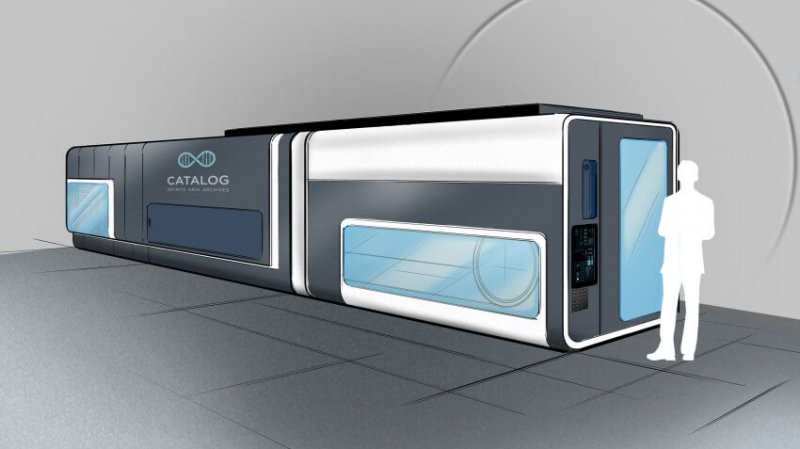In a world awash with data, DNA is a hugely compact way to store it. The data on every iPhone, PC, and server rack on the planet could fit in a Jacuzzi’s worth of genetic letters, for example. It’s also incredibly durable: DNA can last for thousands of years so long as it’s kept relatively cool and dry.
Now, one of the fledgling industry’s startups [Catalog] has unveiled plans for its prototype storage device: a hulking school-bus-size machine that could one day convert movies or data archives into invisible pellets of DNA.
…
The problem is that converting bits into the As, Gs, Cs, and Ts of the genetic code is slow, and it’s a laborious process to retrieve the data. The cost of manufacturing customized DNA is also high, running near a million dollars to store a couple of high-resolution DVDs.
Catalog claims its system is less costly. Instead of synthesizing unique strands of DNA, the process involves involves combining inexpensive, short, premade DNA strands into longer bits of DNA that carry information.
…
According to [CEO Hyunjun] Park, a single prototype machine will be completed early next year and will be able to write one terabit of data into DNA per day. That’s about as much data as fits on a laptop.
Read full, original post: The DNA data storage machine that’s the size of a school bus































